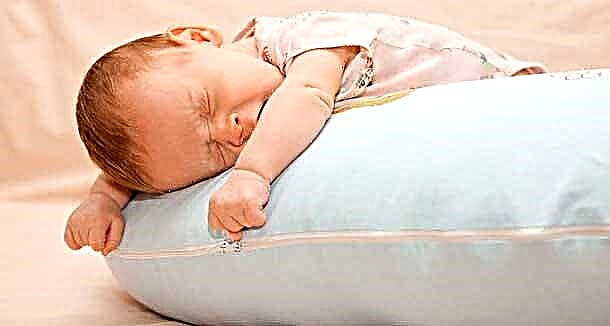
Coprogram for children is prescribed to determine the state and function of the digestive system. Such a study of feces helps to identify the presence of inflammatory and infectious lesions of the digestive system in a child. Also, with the help of a coprogram, occult blood (to diagnose internal bleeding) and worm eggs can be detected in the feces.
Norm
To be able to decipher the coprogram, you should know what characteristics of the stool are being investigated and what are their normal values. Note that in a small child, the type of feeding affects the characteristics of feces.
Possible reasons for deviations
Number
The volume of feces can be influenced by the baby's nutrition - if he eats more plant foods, then the volume of the stool may increase, and when eating food of animal origin, on the contrary, the volume of feces decreases.
Possible causes of pathological changes in stool volume are:
Coloration
The color of the stool is influenced by both the child's nutrition and the use of medicines.
Consistency
The consistency of the stool is determined by the amount of fluid in the child's stool. About 70-75% of the excretions are water, and the rest is intestinal cells, food debris and dead microorganisms.
Smell
Normal fecal odor is specific but not harsh. It is caused by the fermentation processes that normal bacterial flora causes in the intestines. The smell becomes weaker if the child is constipated or on a plant-based diet, and if there is too much meat in the diet or diarrhea, the smell increases.
The presence of a fetid, pungent odor suggests that putrefactive processes prevail in the intestinal lumen.
Pungent sour smell of baby's feces indicates an increase in the amount of fatty acids in the stool.
Acidity
The acid-base state of feces is associated with the bacterial flora that lives in the intestine. If bacteria are in excess, the pH of the stool shifts to the acidic side. Also, a similar shift is characteristic of excess consumption of carbohydrate foods.
If a child consumes a lot of proteins or he has diseases associated with impaired protein digestion (as a result, an increase in putrefactive processes is possible in the intestine), then the acidity becomes more alkaline.
Slime
Epithelial cells in the intestines normally produce mucus to help move baby stool through the digestive tract. In the stool of a healthy child, visible mucus occurs only in the first 6 months of life when fed with human milk.
In other cases, the presence of visible mucus in the stool indicates:
- Intestinal infections;
- Irritable bowel syndrome;
- Celiac disease;
- Malabsorption syndrome;
- Lactase deficiency;
- Hemorrhoids
- Polyposis in the intestine;
- Diverticula in the intestine;
- Cystic fibrosis.
If the child secretes mucus without stool, then this may be a sign of parasitic infestation, intestinal obstruction, or prolonged constipation.
Leukocytes
Normally, such cells enter the child's feces in small quantities and can be represented in the field of view of the microscope up to 8-10 pieces. An increase in the number of white blood cells in the stool is characteristic of infectious and inflammatory lesions of the gastrointestinal tract. Read more about leukocytes in feces in children in another article.
To determine the pathology, the type of leukocytes is also important:
Stercobilin
This bile pigment is responsible for the normal coloration of stool. It is formed in the large intestine from bilirubin. The amount of stercobilin is determined in older children. With its increase, feces are called hypercholic. Such a stool is characteristic of increased bile secretion and hemolytic anemia.
If stercobilin in the feces is less than normal, such a stool is acholic. It is common in hepatitis, pancreatitis, and gallbladder problems.
Bilirubin
This pigment normally enters the child's feces only at an early age, especially when breastfeeding. It gives the stool a greenish tint. In children over one year old, only decay products of this pigment are excreted in the feces.
If bilirubin is found in the stool, then this may confirm problems with the intestinal flora (often this is dysbiosis after the use of antibiotics). Also, bilirubin is detected with diarrhea, since feces are quickly evacuated from the intestines.
Muscle fibers
Such fibers appear in the feces as a result of the digestion of food of animal origin. Normally, when the digestive function is not impaired, a very small number of muscle fibers enter the feces, while they lose their transverse striation.
If this indicator is increased (this phenomenon is called creatorrhea), then the child may have:
- Dyspepsia;
- Accelerated peristalsis (diarrhea);
- Pancreatitis;
- Achilia;
- Gastritis (it can be hypoacidic or anacidic).
Blood
Usually, blood in the child's stool should not be detected. It can appear in the stool in a visible amount when:
- Polyps in the rectum;
- Ulcerative colitis;
- Hemorrhoids
- Anal fissures;
- Proktyte;
- Colon tumors;
- Crohn's disease;
- Ischemic colitis;
- Colon diverticulosis.
If blood gets into the stool in small quantities, it may not be visible externally, but it is detected by a reaction to occult blood. If the reaction is positive, then it indicates the presence of:
- Gum disease;
- Peptic ulcer;
- Nosebleeds;
- Varicose veins in the esophagus;
- Tumor process in the gastrointestinal tract;
- Mallory-Weiss syndrome;
- Dysentery;
- Colitis;
- Intestinal tuberculosis;
- Worms;
- Hemorrhagic vasculitis;
- Typhoid fever, etc.
Soluble protein
If such inclusions are detected in feces, although they are not normally found, then the reason may be:
- Bleeding in the digestive tract;
- Inflammatory processes in the digestive system;
- Ulcerative colitis;
- Putrid form of dyspepsia;
- Celiac disease.
Soap
This type of inclusions is normally present in small quantities in baby feces and is the residue from the digestion of fats.
If there are no soaps in the feces, then the function of processing fats in the digestive tract is impaired. This happens when:
- Pancreatitis, when the function of enzyme production is impaired;
- Fermentative dyspepsia;
- Problems with the production of bile, as well as with its entry into the small intestine (liver and gallbladder diseases);
- Accelerated movement of feces through the digestive system;
- Impaired absorption of substances in the intestine.
Connective tissue fibers in feces
If such fibers are found in baby feces, then they indicate problems with the digestion of food of animal origin. Possible causes may be gastritis with reduced secretory function or pancreatitis, as well as diarrhea.
Plant fiber
In the analysis of feces, only the presence of fiber, which is digested in the intestine, is taken into account. Normally, it is this type of dietary fiber that should be absent, in contrast to fiber, which is not digested (it occurs in feces and indicates the use of plant foods).
Digestible plant fiber is found in the stool when:
- Pancreatitis;
- Ulcerative colitis;
- Anacid, as well as hypoacid gastritis;
- Eating large amounts of plant foods;
- Putrid dyspepsia;
- Accelerated passage of food through the intestines with diarrhea.
Detritus
This is the name of the part of the feces, represented by digested food, microbes and epithelial intestinal cells. The more this indicator is in the coprogram, the better the child digests food.
The presence of starch
This type of carbohydrate, contained in cereals, fruits and vegetable dishes, should normally be absent in feces. If it is found in feces, then the child may have:
- Gastritis;
- Pancreatitis;
- Diarrhea;
- Fermentative dyspepsia;
Fatty acid
They are a product of the digestion of fats. And if in babies up to a year, such acids can be present in feces, then in older children their identification indicates:
- Disorders of the pancreas;
- Diarrhea (food leaves the intestines too quickly);
- Intestinal absorption problems;
- Problems with the production of bile, as well as its entry into the intestines;
- Fermentative dyspepsia.
Revealing neutral fat in feces
A small amount of it is permissible for the analysis of feces of children in the first year of life, since their enzyme system is not yet fully developed. Older children should not have neutral fat in the stool, since it is completely processed by the body for energy. If neutral fat is found in the stool of a child, then the causes will be the same as when fatty acids are found in the stool.
Other pathological inclusions
The presence of larvae, segments and eggs of helminths is detected during helminthiases, and the presence of lamblia in the feces indicates giardiasis. Pus can enter the stool if there is an abscess or suppuration in the intestines.



